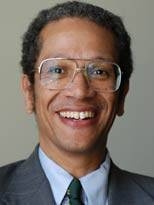President Susan Hockfield and Chancellor Phillip L. Clay have announced the appointment of Daniel Hastings, currently director of the MIT Engineering Systems Division, as dean for undergraduate education.
Hastings, professor of aeronautics and astronautics and engineering systems, will assume his new role on Jan. 1. He succeeds Robert Redwine, professor of physics, who served as dean from 2000 to 2005.
In making the announcement, Hockfield said, "I am delighted that Professor Hastings has agreed to take on this role, particularly at such an exciting time in the evolution of our undergraduate program. He brings both deep experience in teaching at MIT and national leadership in engineering and science to this important task."
Clay praised Redwine's "outstanding job of advancing the educational mission of MIT and of building the systems to support undergraduate education."
Redwine was "particularly effective in engaging both faculty and students in the dialogue about how to improve the educational program at MIT. These accomplishments have made it possible to attract an ever more qualified and diverse student body and to provide stronger support to them, from orientation programs to new modes of learning," Clay said.
The dean for undergraduate education reports to the chancellor and oversees a department that includes admissions, academic services, student financial services, registrar, the Office of Minority Education, career services, the Edgerton Center, the Teaching and Learning Laboratory and ROTC.
Hastings, 49, joined the MIT faculty in 1985. His teaching has covered a broad range -- from freshman seminars and undergraduate teaching in rocket propulsion to leadership of the Technology and Policy Program and presently, the Engineering Systems Division (ESD). He has served on many Institute committees and has been recognized both inside and outside of MIT for his educational and research contributions.
Chancellor Clay expressed confidence that Hastings will use his "considerable talents -- together with Dean of Student Life Larry Benedict -- to help draw out the synergies that will strengthen education at MIT and our still challenging agenda for student life and learning."
Hastings takes on the position just as the Task Force on the Undergraduate Educational Commons completes its report, which he described as an "exciting opportunity for MIT to define a 21st century version of a science and technology-centric undergraduate education."
The nation will benefit, Hastings said, as MIT develops a vision of global leadership to guide its educational mission.
"The forces of globalization that are making the world flatter demand that we understand how to educate our undergraduates to lead in this new world. The country needs this and we can be a model that reflects breath, depth and quality," he said.
Hastings said his personal challenge in his new role will be to work along with his colleagues across the Institute toward "substantial progress on ensuring that we are attracting the best and brightest of all our diverse undergraduate population into graduate school in engineering and science. The country needs this, and we can show how to do this with MIT quality. This issue starts in the undergraduate school."
Clay added, "One of the areas where we have a chance to shine is the undergraduate-graduate interface. MIT's educational programs and subsequent contributions to society will be enhanced by paying more attention to that interface."
For Redwine, the work of the task force has placed the Institute community "well on our way to redefining an MIT education for the future. This continues to be a truly exciting time for education at MIT."
Adding a personal note on the rewards of serving as dean, Redwine counted the "interactions with so many dedicated members of our community, including faculty, staff and students" as most gratifying.
Hastings has long been involved in educational and research leadership, serving as director of several laboratories and programs.
When Hastings was appointed co-director of ESD, Daniel Roos, associate dean for engineering systems, said, "ESD was established to broaden engineering education and practice. Daniel Hastings has the wisdom and experience to oversee that development."
Hastings' leadership experience also includes service on the national level. A member of the National Science Board, he has chaired and served on several NASA advisory committees and has led national studies on government investment in space technology.
In his role as Air Force chief scientist (1997 to 1999), Hastings provided assessments to the chief of staff on a wide range of scientific and technical issues affecting the Air Force mission. He led several influential studies on where the Air Force should invest in space, on global energy projections and on options for a science and technology workforce for the 21st century.
Hastings received the B.A. in mathematics from Oxford University in 1976, the S.M. degree in aeronautics and astronautics from MIT in 1978 and the Ph.D. degree in plasma physics from MIT in 1980.
A version of this article appeared in MIT Tech Talk on December 7, 2005 (download PDF).






